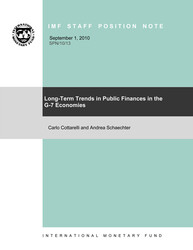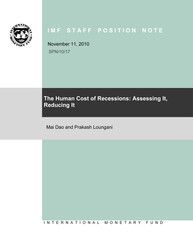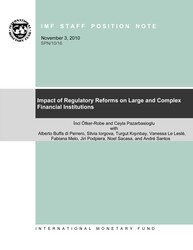
Long-Term Trends in Public Finances in the G-7 Economies
Spn/10/13
Today's record public debt levels in most advanced economies are not only a direct fall-out from the global crisis. Public debt had ratcheted up over many decades before, when it had been used, in most of the G-7 countries, as the ultimate shock absorber—rising in bad times but not declining much in good times. Alongside, primary spending increased, particularly during 1965–85, reflecting predominantly a surge in health care and pension spending. Looking ahead, advanced economies will face the formidable challenge of reducing debt ratios at a time when ageing-related spending, in particular often underestimated pressures from health care systems, will put additional pressure on public finances. Addressing these fiscal challenges will require growth-friendly structural reforms, a fiscal strategy involving gradual but steady fiscal adjustment, stronger fiscal institutions, expenditure and revenue reforms, and an appropriate degree of burden sharing across all stakeholders.
Publication date: September 2010
ISBN: 9781455263325
$0.00
Add to Cart by clicking price of the language and format you'd like to purchase
Available Languages and Formats
| English |
Prices in red indicate formats that are not yet available but are forthcoming.
Topics covered in this book
This title contains information about the following subjects.
Click on a subject if you would like to see other titles with the same subjects.
Economics- Macroeconomics , Money and Monetary Policy , Economics / General , Fiscal policy , public debt , size of government , fiscal consolidation , age-related spending , financial crisis
Summary
Copyright © 2010 - 2024
Powered by:
AIDC



